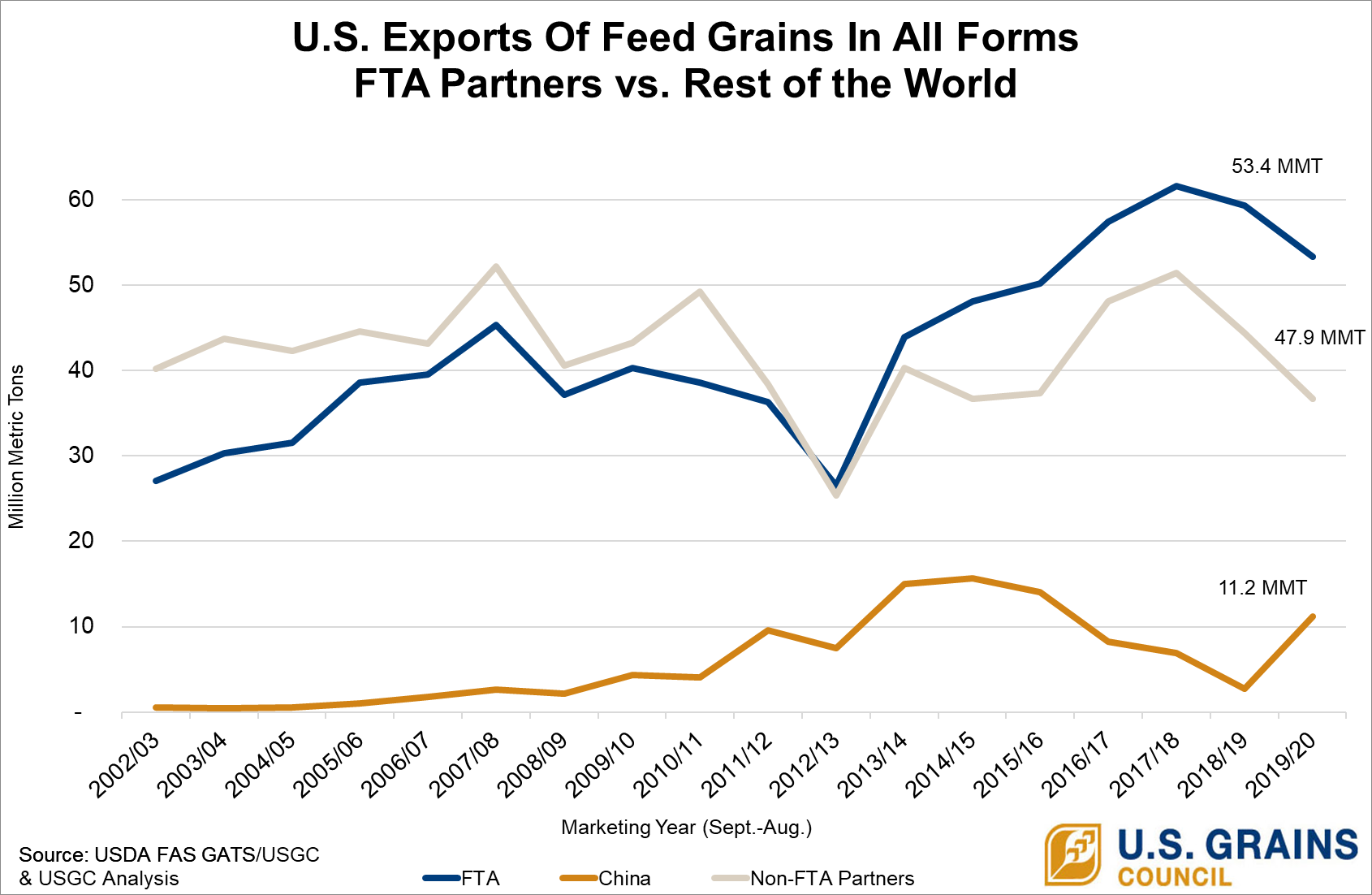
Free trade agreement (FTA) partners purchased more than half of all U.S. exports of feed grains in all forms (GIAF) in the 2019/2020 marketing year, according to data from the U.S. Department of Agriculture (USDA) and analysis by the U.S. Grains Council (USGC).
The United States has 14 official FTAs in place with 20 countries. These trading partners represent some of the largest and most loyal customers for exports of U.S. corn, barley, sorghum, ethanol, distiller’s dried grains with solubles (DDGS), and other coarse grain products. In its GIAF calculation, the Council also includes the corn equivalent of beef, pork, and poultry meat exports to better capture a holistic view of actual grain demand from overseas.
U.S. FTA partners imported 53 percent of all U.S. GIAF exports in 2019/2020, a total of 53.4 million metric tons, equivalent to 2.10 billion bushels.
The United States-Mexico-Canada Agreement (USMCA), the successor agreement to the North American Free Trade Agreement (NAFTA), ranked as the top FTA for grain-related trade. Geographic proximity, duty-free access first provided by USMCA and NAFTA, and decades of market development work have established both Mexico and Canada as large and growing markets for U.S. GIAF.
Other FTA markets with strong market development programming were also drivers of sales.
U.S. GIAF exports to South Korea have increased 22 percent since the U.S.-Korea Free Trade Agreement (KORUS) went into effect in 2012. The country was the fifth-largest GIAF market in the 2019/2020 marketing year at more than 6.41 million metric tons (equivalent to 252.3 million bushels), valued at $3.22 billion.
Colombian GIAF purchases fell off slightly from their steady upward trend since the U.S.-Colombia Free Trade Agreement went into effect in 2012. Colombia was the sixth largest GIAF market in 2019/2020 (down from #5 the previous year) with sales of 6.36 million metric tons (250 million bushels), valued at $1.32 billion.
The Dominican Republic-Central America Free Trade Agreement (CAFTA-DR) is a regional free trade agreement between the United States and Central American trading partners – Costa Rica, El Salvador, Guatemala, Honduras, Nicaragua and the Dominican Republic. U.S. corn exports to CAFTA-DR countries have increased 139% since the agreement went into effect in 2006.
These exports don’t include sales to countries with which the United States has trading pacts, but not full free trade agreements, for instance the Phase One agreement with China and an initial trade pact with Japan. The robust sales to these trading partners further demonstrate the importance of policy actions that will maintain and grow U.S. market share in the years to come.

